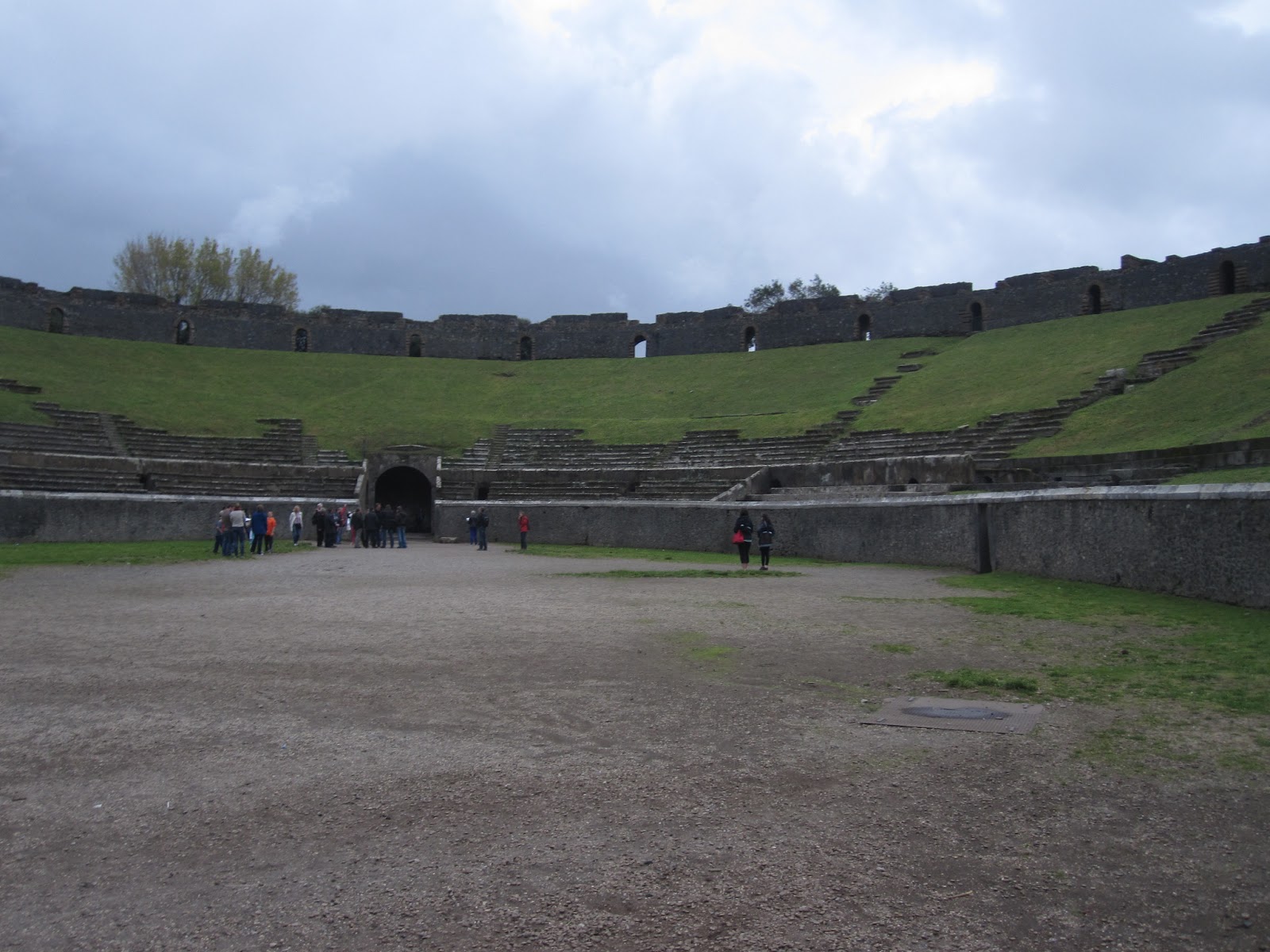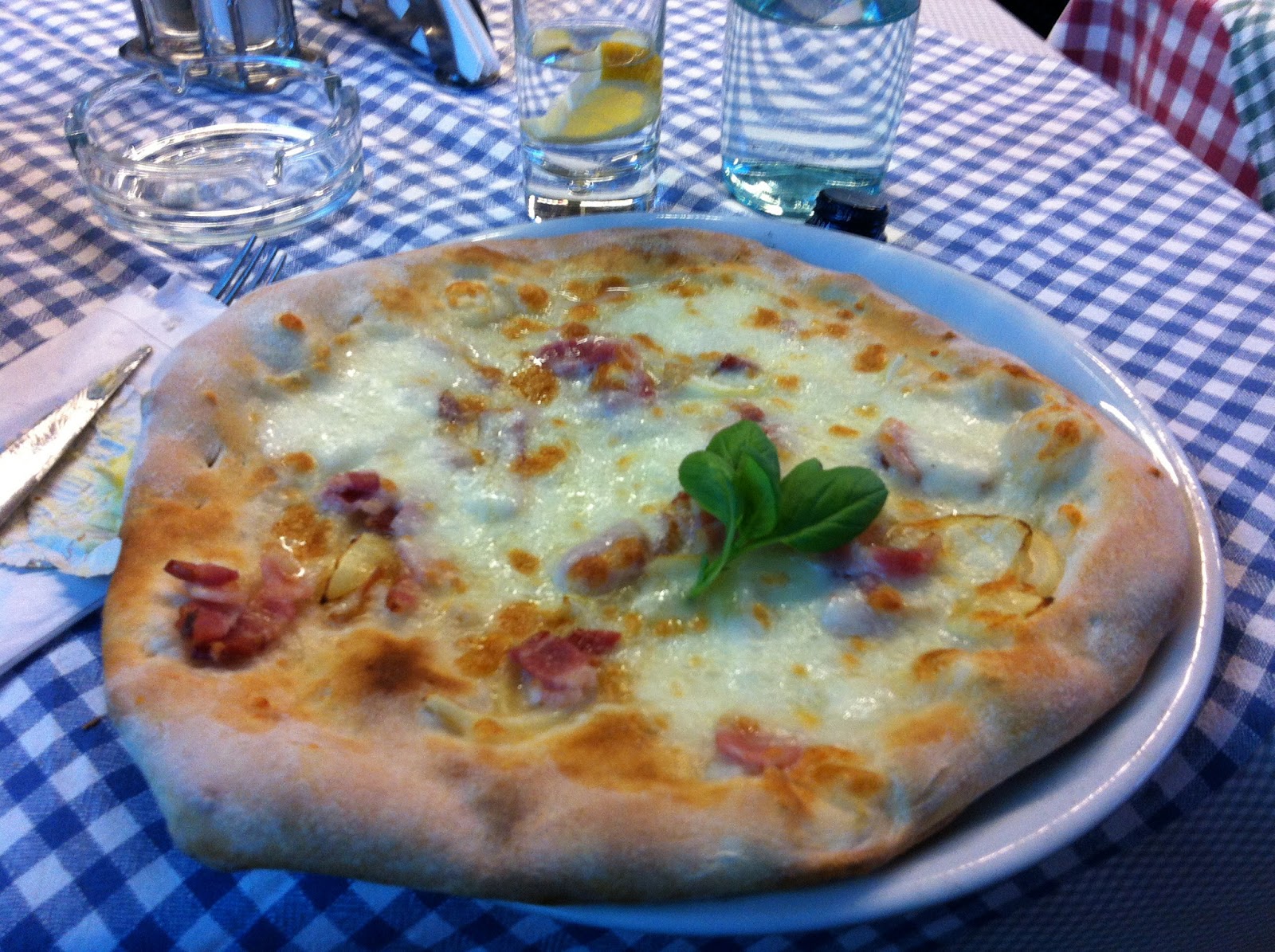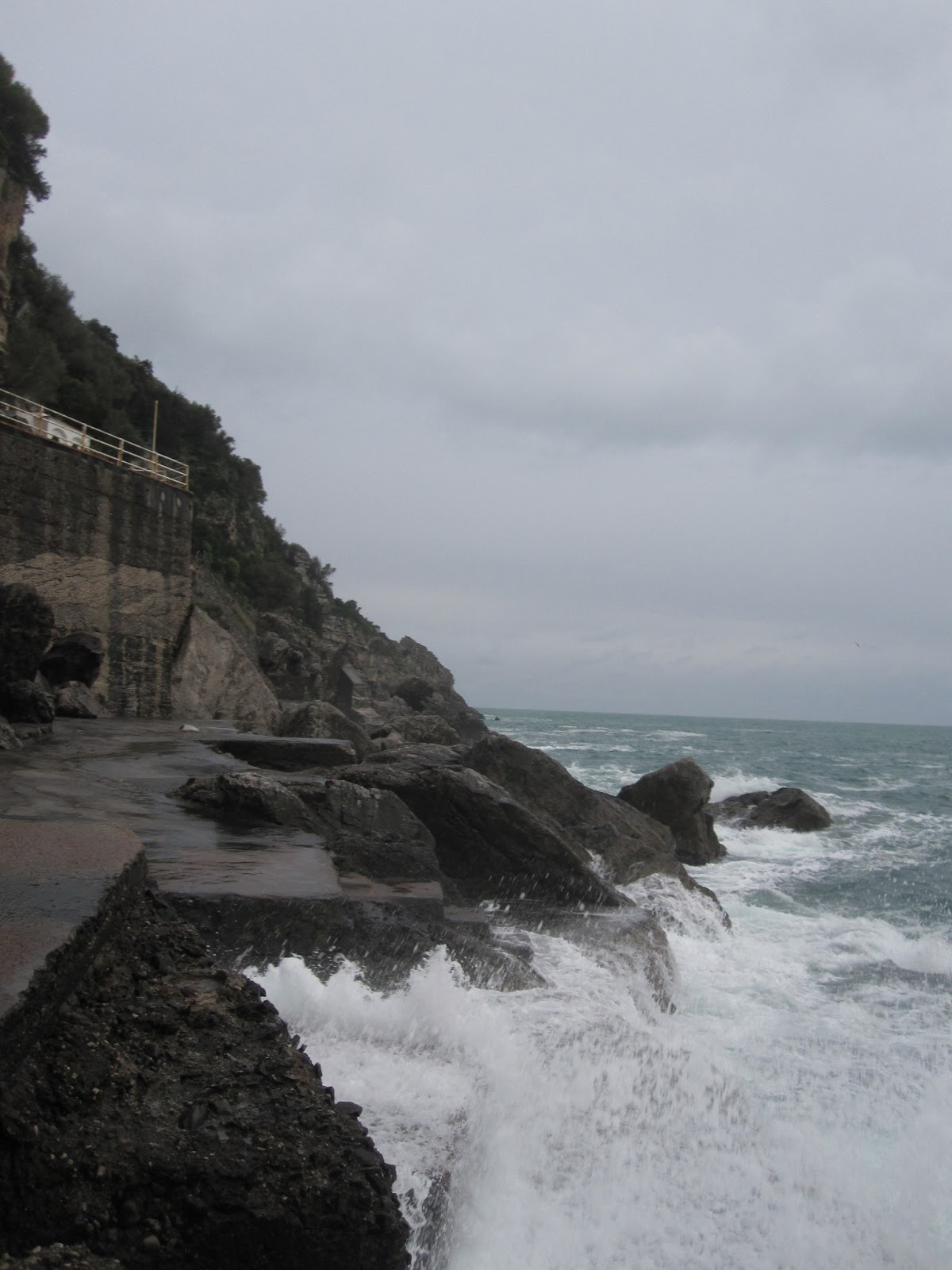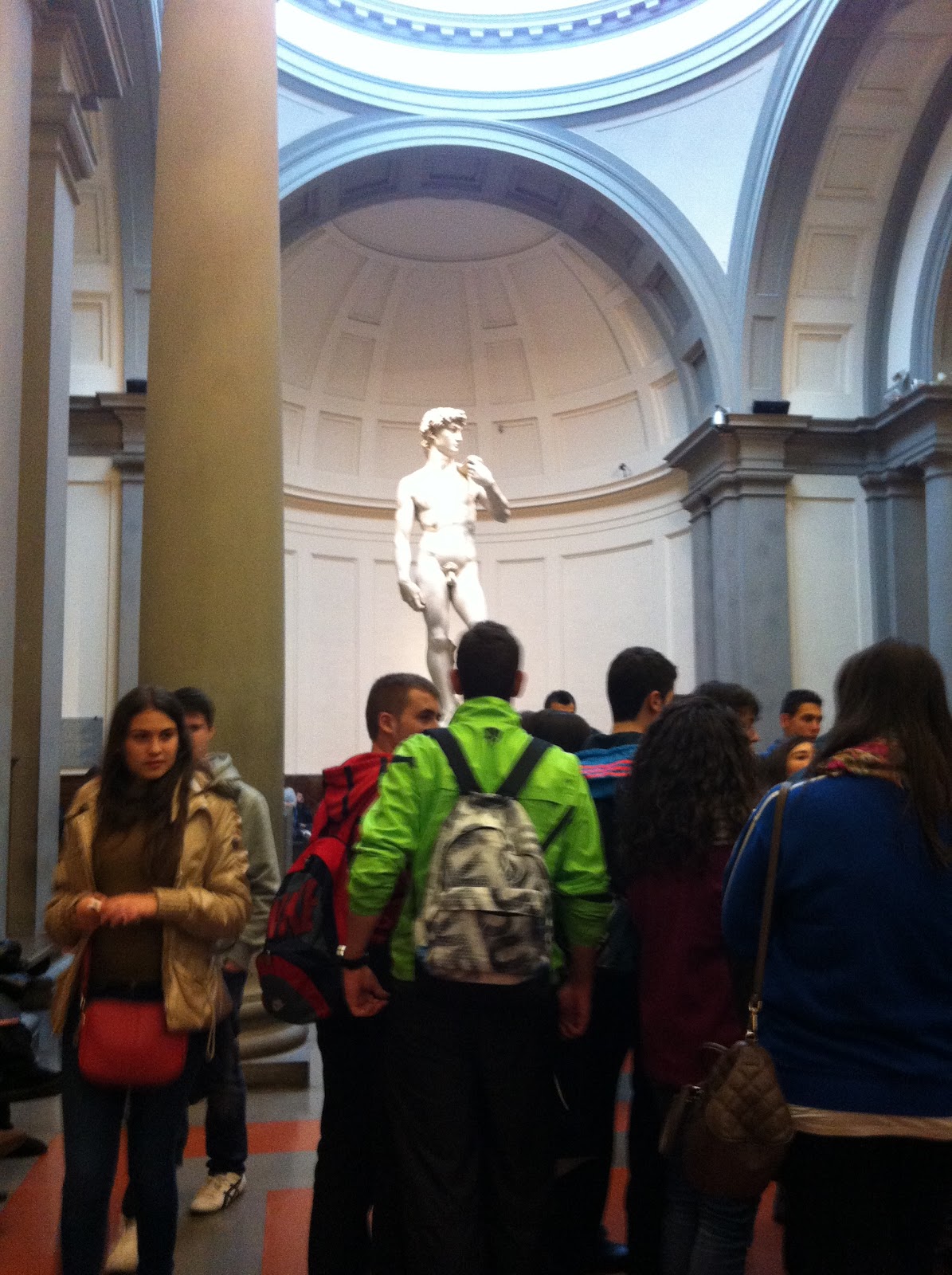Monday March 25 - Sorrento
On Monday we took an early train from Florence to Naples. Once we got to Naples we took this sketchy metro/train thing to Sorrento. Ok, so it wasn't sketchy, it was just extremely graffitied, dirty and old. And packed full of people, we could barely get on! So that wasn't too fun. But we got to Sorrento ok, and checked into our hotel, which we spent a little extra money on since we would be staying there 3 nights. It was really nice and quite big. We got some sandwiches from a nearby store, because on our way to the hotel the man kept telling us about his sandwiches. They definitely weren't paninis like he told us, but they were alright. We spend the rest of the day walking around Sorrento, looking at all of the little shops, getting gelato and going down by the coast.
 |
| Crazy road, and walking path, down to the coast |
 |
| Sorrento by the coast |
 |
| Looking down on Sorrento |
 |
| Dinner |
 |
| Statue of Mary |
 |
| Inside of the church where they blessed Mary, at the altar. On the right side is one of the people holding torches, and some of the band. |
Tuesday March 26 - Day trip to Pompeii
After a breakfast with pastries, fruit, yogurt and bread at the hotel, we set off to Pompeii! We did have to take the sketchy train thing to Pompeii, but it wasn't as crowded this time.
Since I just visited the Pompeii exhibit in Madrid and wrote a 3 page summary on it for my ancient art history class, I've got all this information down! Pompeii was an ancient Roman city (during the Roman Empire) that was destroyed and covered by ash in a volcanic eruption of Mt. Vesuvius in 79 AD. Many people in the city died, either encased by rubble, or by asphyxiation by poisonous volcanic gases. The cite was really well preserved, since it was buried in ash, and work to uncover it started in the 1700s, and continues today. Pompeii was a city that was booming at the time, it was very large, was an important center for trade and had all the characteristics of a Roman city - amphitheater for spectacles and gladiator fights; theater for performances; Roman forum as an area for the public; public baths; many bakeries, fruit shops and taverns lining the streets; fish and meat markets; houses of poor, working class and wealthy; temples dedicated to Roman gods and goddesses; administration buildings; and basilica (for public justice).
Pompeii is the best preserved ancient Roman city, and helped historians to collect more information on the lives of ancient Romans. Many artifacts were really well preserved because of the volcanic ash, and as I saw in the exhibit in Madrid, some look as good as new! Romans usually decorated their houses with frescoes, and many of these can be seen still remaining in Pompeii, more intact ones have been taken out and are preserved in museums. The frescoes are known for their Pompeiian Red, made from cinnabar and sulfur, which was actually yellow ochre. During the volcanic eruption of Mt. Vesuvius, the volcanic gases turned the yellow to red. Many casts of people who died can also be seen in Pompeii. In 1860, Giuseppe Fiorelli injected plaster between the bones and solidified ash of those who had perished during the eruption, making a cast and preserving their forms.
If you ever go to Pompeii, prepare to get lost! The place is absolutely enormous, and if you wanted to see everything you would probably have to do it in like 3 days. And if you really want to know what each building is, you should probably get an audio tour. We didn't do the audio tour, but with our knowledge of Roman things we could kind of piece together what everything was, and overhearing tour guides helped too. Many times we just wandered off the main path, into ruins that weren't blocked off, and kept going through the maze of buildings until we couldn't walk anymore. We felt like real explorers! I ended up taking close to 400 pictures, so I picked out some of the best pictures!
 |
| Largest street of Pompeii |
.jpg) |
| Mosaic at entrance to a house. "Cave Canum" (Latin) = Beware of dog |
 |
| Fresco (wall painting) in a tavern, with Pompeiian Red |
 |
| Theater, where plays would be performed |
 |
| Amphitheater where spectacles like gladiator fights, wild beast shows and public executions would take place. |
 |
| Dinner |
Wednesday March 27 - Day trip to Capri and Praiano
For our last day in Sorrento, we took a trip to the island of Capri and Praiano on the Amalfi Coast. It was kind of a messed up day, we didn't really know where we were going, and maps (nor people) were able to help us. But I took some good pictures, saw some pretty views, and was happy when we got back from our forever long day to eat dinner and gelato.
We started out with Capri. We took a 45 minute long ferry ride to the island of Capri. When we got off, it was so pretty! Then we decided to follow the signs up to the city center, which was a whole bunch of stairs! So many stairs! This entire day all I did was climb stairs! So we walked around Capri, got lost because all the streets are so small, and tried to find this big fortress that we saw. So we asked for directions, thought we were going the correct way and what did we find? A monastery, well certosa in Italian, which was not what we wanted! But we looked around a little bit. We then set off to find one of the look-out points, which we did find and turned out to be really beautiful, and we were able to see the
Faraglioni, three sea stacks in the Bay of Naples, off the coast of Capri.
 |
| Don't drive your car into the water! Sign in the dock at Sorrento. |
 |
| Dock of Capri |
 |
| After we had climbed way too many steps, we came to the city center, and this view. |
 |
| Pretty flowers at the look-out point |
 |
| Faraglioni, the three sea stacks. Apparently the Blue Lizard can only be found on one of the three stacks. |
 |
| Church with pretty mosaics on the area in front of it |
 |
| Snail! There were multiple snails on the way down to the "beach" |
 |
| And this is the "beach" |
 |
| View after climbing stairs from the beach. |
 |
| This is what Praiano was supposed to look like |
And the next day, we finally were on our way to Rome!!!
Things I learned in Italy:
- Courgettes is another word for zucchini
- Be ready to get lost when you go to Pompeii
- Volcanoes can cause a lot of damage...be prepared if you live near one!
- Bring a rain jacket, because from what I saw it rains a lot
- I hate stairs
- Gelato is seriously addicting
- Know where you are going, and what bus stop to get off, before you get there. And ask someone that knows English for directions, unless you can speak the native langauge





















